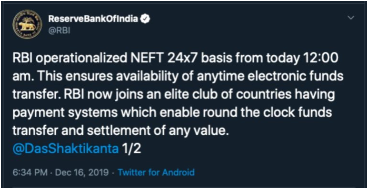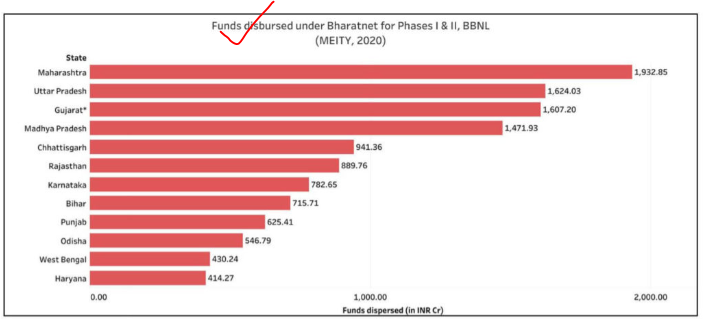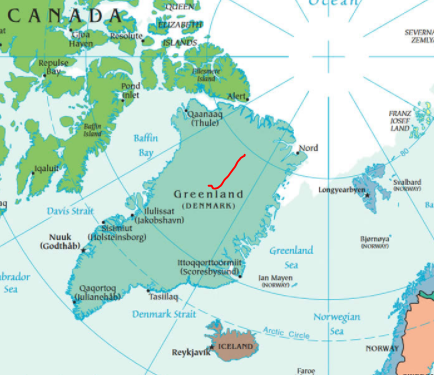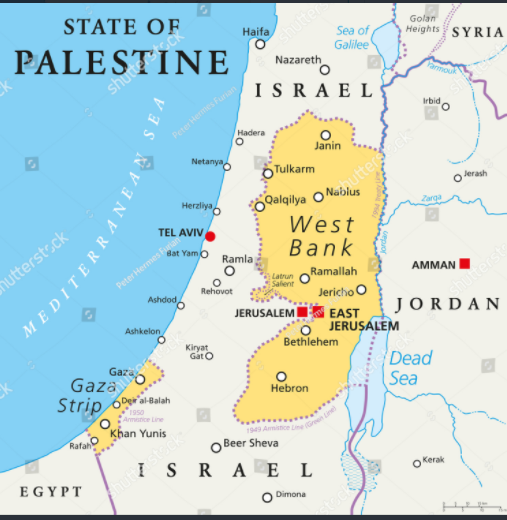Goaltide Daily Current Affairs 2020
Current Affair 1:
Payment and Settlement System
Very important topic for exam.
The Reserve Bank of India (RBI) released the 21st issue of its bi-annual report- the Financial Stability Report (FSR), in July 2020. The purpose of this report is to ascertain the financial stability of the economy by reviewing the potential risks and their impact on the various components of the economy.
In an earlier Current Affairs posted, we looked into what this report has to say about the health of Banks in the country. Today, we look into the initiatives being taken and proposed by RBI regarding Payments & Settlements.
The FSR provides information about three measures taken by RBI since December 2019 in regard to Payment & Settlement Systems.
- Launch of NEFT – 24x7x365
- Setting up the Payments Infrastructure Development Fund
- Business Continuity of Payment Systems
National Electronic Funds Transfer (NEFT) is a nation-wide centralized payment system owned and operated by the Reserve Bank of India (RBI). This enables bank customers in India to transfer funds between any two NEFT enabled bank accounts
If we see RBI’s Annual Report for 2018-19, transactions worth ? 228 lakh crores were done through NEFT during 2018-19. This is nearly double the value, two years ago i.e. ? 120 lakh crores in 2016-17. The total number of NEFT transactions in 2018-19 were around 232 crores. See below.

Comparatively, the total value of amount transferred through IMPS was nearly ? 16 lakh crores from 175 crore transactions. This indicates that NEFT is the preferred option for higher volume transactions, due to the monetary limits on IMPS transactions.
Earlier, the major problem with the NEFT was timing problem. Earlier, an NEFT transaction could only be done between 8:00 AM to 7:00 PM. Now, it has been changed. Effective from 16 December 2019, RBI has announced that the NEFT transactions can be done round the clock and across all the days in a year. This provides the feasibility of transferring funds, making utility payments, making purchases etc. round the clock.

With this, India joins an elite group of five other countries – United Kingdom, Hong Kong, South Korea, Singapore and China to provide round-the-clock fund transfer facility. This initiative was driven as part of ‘Payment and Settlement Systems in India: Vision – 2019-2021’ released in May 2019.
Vision 2021 concentrates on a two-pronged approach of, (a) exceptional customer experience; and (b) enabling an eco-system which will result in this customer experience. With this in view, the Vision aims towards,

Setting up of Payments Infrastructure Development Fund
As per RBI’s annual report for 2018-19, the total number of transactions at Point of Sale (PoS) Terminals during 2018-19, using Credit cards was around 176 crores, while that of transactions through Debit Cards and PPIs (Pre-paid Payment Instruments) were 440 crores and 460 crores respectively.

Meanwhile, there was also an increase in the ‘Acceptance Infrastructure’ i.e. the equipment which is used to accept the cards for payment. The number of PoS terminals increased from 30.8 lakhs as on 31 March 2018 to 37.2 lakhs by 31 March 2019, an increase of 21%.
For your information, creating an ‘Acceptance Development Fund’ was part of Payments Systems Vision 2019-21.

So, as payments increased, RBI created a Payments Infrastructure Development Fund (PIDF) on 05 June 2020, to subsidize the deployment of PoS acceptance infrastructure. The main emphasis of this fund is to increase the infrastructure in Tier-III to Tier-VI centres along with north-eastern parts of India.

RBI made an initial contribution of ? 250 crores towards the corpus of the fund. This covers half of the fund, with the remaining contribution coming from card issuing banks and Card networks operating in the country. The fund would be governed by an Advisory Council, which is managed and administered by RBI.
Ensuring Business Continuity during COVID-19 Lockdown
RBI has a Business Contingency Plan (BCP) in place, to be implemented in case of any emergencies and contingencies. COVID-19 was one such emergency which prompted the implementation of BCP. Accordingly, RBI alerted the different stakeholders of the Banking System India and initiated the Business continuity measures on 16 March 2020.

As per the update provided in Financial Stability Report, the following initiatives were taken by RBI for smooth running of payment systems.
- Day-to-day operations of RTGS (Real Time Gross Settlement) & NEFT systems were shifted to Primary Data Centre, under protected environment.
- Work-from-home procedures were implemented by Clearing Corporation of India Limited (CCIL) for its officials. CCIL takes care of financial market infrastructure for Money market, government securities & foreign exchange settlements.
- Skeletal staff was maintained in the office of CCIL along with minimum staff in remote disaster recovery sites, for them to take over in case of any disruptions in the primary sites.
Current Affair 2:
BharatNet program
Prime Minister Narendra Modi used the Independence Day speech to launch the National Digital Health Mission and promise optical fibre connectivity to all six lakh villages in 1,000 days. Today we will discuss Optical Fibre Network Project.
We will see what exactly is BharatNet? When was it conceived and what is the current status of implementation?
BharatNet programme was earlier known as National Optical Fiber Network during the UPA
- With a vision to connect over 2,50,000 Gram Panchayats across the country, the Manmohan Singh led UPA government initiated the National Optical Fiber Network (NOFN) programme in 2011.
- Like in the case of a few other schemes, the Modi government renamed the programme as BharatNet programme.
- The programme aims at taking broadband connectivity to every nook and corner of the country by using optical fiber.
- It is considered the biggest rural telecom project in the world.
- The project is now an integral part of the current government’s Digital India initiative- the flagship programme to empower citizens digitally and to bridge the digital gap between rural and urban India.

BBNL manages and takes care of the operation of BharatNet
Bharat Broadband Network Limited (BBNL) is a special purpose vehicle, set up by the government of India under the Department of Telecommunications for management, establishment, and operation of BharatNet. It was incorporated in 2012 as a PSU under the Companies Act.
What government envisages to do through Bharat Net?
Through BharatNet, the government envisages providing a minimum of 100 Mbps bandwidth at each Gram Panchayat so that online services can be accessed by everyone, especially those in rural India. This includes e-governance, e-learning, e-banking, e-commerce and e-health services. The Infrastructure is a national asset and non-discriminatory access will be provided to all telecom service providers. In short, the central government is laying broadband internet infrastructure that can be used by governments and service providers.
Deadlines have been modified time and again
The program was originally planned to be implemented in a phased manner. Deadlines were set by the UPA government for each of the three phases. They had ambitious deadlines to complete the entire project in two years– by 2013. This was further extended to:
- Phase I – 50,000 Gram Panchayats by 31 March 2015
- Phase II- 1 lakh Gram Panchayats by March 2016
- Phase III- remaining 1 Lakh Gram Panchayats by December 2016
But, after the NDA came to power in 2014, these deadlines were extended up to March 2017. Nonetheless, the first phase of connecting more than one lakh panchayats was completed in only December 2017. Currently, phase – II to connect the remaining 1.5 lakh panchayats is under implementation. The government is expecting to complete the project by August 2021.
Funds are earmarked as a whole, not state-wise
Funds for BharatNet are allocated as a whole and not state-wise. A lump sum amount is allocated and disbursed from Universal Service Obligation Fund (USOF) to BBNL for implementation of BharatNet. USOF’s task is to make sure that people in rural areas have access to telecom connectivity at an affordable and reasonable rate. It was established in 2002.

Not important: Just to end this topic with this point as it was recently declared in Parliament.
Combining the funds disbursed for both phase I & II, Maharashtra has accounted for almost ?1,933 crores while UP and Gujarat have received more than ? 1,600 crores each as per Lok Sabha answer provided on 05 February 2020.

Current Affair 3:
Recent examples of rising Temperatures of Earth
Very short news. Just two places for today’s news. We will see news and Map (for this we mainly choose such news).
- Greenland
- Death Valley

Greenland ‘s ice sheet may have shrunk past the point of return, with the ice likely to melt away no matter how quickly the world reduces climate-warming emissions, new research suggests.
Scientists studied data on 234 glaciers across the Arctic territory spanning 34 years through 2018 and found that annual snowfall was no longer enough to replenish glaciers of the snow and ice being lost to summertime melting.
That melting is already causing global seas to rise about a millimeter on average per year. If all of Greenland ‘s ice goes, the water released would push sea levels up by an average of 6 meters – enough to swamp many coastal cities around the world. This process, however, would take decades.


California’s Death Valley registered a temperature of 54.4 degrees Celsius or 129.9 degrees Fahrenheit on August 16, 2020, which, once verified, could be the hottest temperature ever recorded on Earth.

Current Affair 4:
NALSA Launches Campaign for Empowering Women Through Legal Awareness
News:

- The campaign, rolled out on the occasion of 74th Independence Day of India, is a Joint initiative of the NALSA and the National Commission for Women to make women aware of the relevant rights and protections available to them under the various laws.
- Under the Project, 570 legal literacy programmes shall be carried out for women in 285 districts in the States of Andhra Pradesh, Assam, Madhya Pradesh, Maharashtra, Rajasthan, Telangana, Uttar Pradesh and West Bengal.
- This will help the women to enhance their capacities so that they are able to advance their rights and navigate the judicial and administrative set up for actualization of their rights.

NALSA is a decentralized body: Remember this also.
In every State, State Legal Services Authority has been constituted to give effect to the policies and directions of the NALSA and to give free legal services to the people and conduct Lok Adalats in the State. The State Legal Services Authority is headed by Hon’ble the Chief Justice of the respective High Court who is the Patron-in-Chief of the State Legal Services Authority.
In every District, District Legal Services Authority has been constituted to implement Legal Services Programmes in the District. The District Legal Services Authority is situated in the District Courts Complex in every District and chaired by the District Judge of the respective district.
Section 12 of the Legal Services Authorities Act, 1987 prescribes the criteria for giving legal services to the eligible persons. Section 12 of the Act reads as under: -
Every person who has to file or defend a case shall be entitled to legal services under this Act if that person is a
- member of a Scheduled Caste or Scheduled Tribe
- a victim of trafficking in human beings or begar as referred to in Article 23 of the Constitution
- a woman or a child
- a mentally ill or otherwise disabled person
- a person under circumstances of undeserved want such as being a victim of a mass disaster, ethnic violence, caste atrocity, flood, drought, earthquake or industrial disaster
- an industrial workman
Also see the constitutional provisions regarding Legal Aid:
- Article 39A of the Constitution of India provides that State shall secure that the operation of the legal system promotes justice on a basis of equal opportunity, and shall in particular, provide free legal aid, by suitable legislation or schemes or in any other way, to ensure that opportunities for securing justice are not denied to any citizen by reason of economic or other disability.
- Articles 14 and 22(1) also make it obligatory for the State to ensure equality before law and a legal system which promotes justice on a basis of equal opportunity to all. Legal aid strives to ensure that constitutional pledge is fulfilled in its letter and spirit and equal justice is made available to the poor, downtrodden and weaker sections of the society.
Current Affair 5:
Israel-UAE Peace Deal
Recently, the President of the USA has announced that Israel and the United Arab Emirates (UAE) have agreed to establish full diplomatic ties as part of a deal to halt the annexation of occupied land sought by the Palestinians for their future state.

Overview of the agreement: Very brief you need to know now. As gradually development takes place, we will keep learning. See both the maps carefully.
- The UAE has become the first Gulf Arab state to do so and only the third Arab nation to have active diplomatic ties with Israel.
- Egypt made a peace deal with Israel in 1979, followed by Jordan in 1994.
- Under the deal, Israel would suspend its plans to annex large parts of the occupied West Bank. The West Bank is sandwiched between Israel and Jordan. One of its major cities is Ramallah, the de facto administrative capital of Palestine. Israel took control of it in the Six-day Arab-Israeli war, 1967 and has over the years established settlements there.
- A joint statement from the USA, the UAE and Israel has been issued which says that delegations would meet in the coming weeks to sign deals on direct flights, security, telecommunications, energy, tourism and health care.
- Both nations will also partner on fighting the Covid-19 pandemic together.
Impact on the UAE:
The deal smoothens the UAE’s international campaign to be seen as a beacon of tolerance in the Middle East despite being governed by autocratic rulers. It puts the UAE out first in a regional recognition race among neighbouring Gulf Arab states.
Impact on Israel:
The announcement justifies the year-long claims of Israeli Prime Minister Benjamin Netanyahu that his government enjoys closer ties to Arab nations than publicly acknowledged. The deal gives Netanyahu a domestic boost at a time when Israel’s coalition government is facing infighting and the possibility of early elections.




